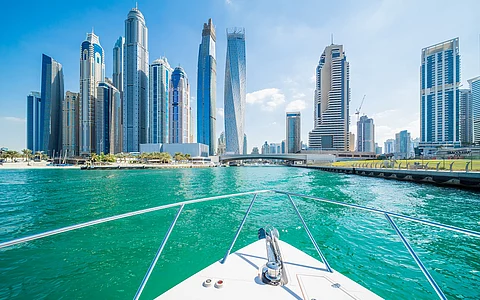

A recent Oxfam report highlights the stark climate inequality in the MENA region, where the wealthiest individuals are responsible for a disproportionate share of emissions.
The richest 10% contribute 60% of emissions, while the poorest 50% account for just 10%.
This disparity exacerbates climate vulnerabilities, urging transformative action for a just transition.
A new report has revealed that the richest in the Middle East and North Africa (MENA) region produce a shockingly disproportionate share of consumption-based emissions with their massive super yachts and private jets.
The report, Not Everyone is in the Same Boat; Climate and Inequality in the Middle East and North Africa, draws on research by the Stockholm Environment Institute (SEI) and Oxfam and shows how those who contribute the least to the climate crisis suffer the consequences of climate breakdown the most, increasing their risk of water scarcity, food insecurity, and displacement.
According to the report, within the MENA region, the wealthiest and most resource-rich countries are disproportionately responsible for most consumption-based emissions, relative to their population.
As of 2022, the richest 10 per cent are responsible for 60 per cent of emissions, while the poorest 50 per cent of the region contribute only 10 per cent.
The pattern for big-emitting countries is the same as for individuals—the richest 0.1 per cent emitted 437.5 times more per capita than the bottom 50 per cent in 1999, a disparity that grew to 465 times by 2022.
The high emission shares and global rankings of Saudi Arabia, the UAE, Egypt, Iraq, and Algeria highlight their significant role in global emissions, driven by their oil and gas-reliant economies.
Overall, the region registers stark levels of climate inequality as emissions are concentrated in the hands of the super-rich. The richest 0.1 per cent (496,000 people) emit as much as the poorest 50 per cent (248 million people).
These emissions disparities are driven by the staggering economic inequalities in the region.
The MENA region is one of the most unequal regions in the world in terms of wealth and income. Half of the countries with the most significant growth in wealth inequality worldwide are in MENA.
The region stands at the crux of two interlinked and inseparable crises — skyrocketing inequality and climate breakdown.
The region faces extreme climate vulnerabilities, including record-breaking heat waves, droughts, desertification, and worsening food insecurity.
The inequalities have made it even more difficult for the rest of the population to navigate the climate crisis, as they often lack the resources to adapt to and mitigate the impact of extreme weather events, water scarcity, and food insecurity.
The report also found that decades of austerity policies and sustained public spending cuts have exacerbated both the climate and inequality crises.
To prevent further climate breakdown, governments in MENA, international institutions, and Global North nations must take transformative action. A reversal of austerity policies and bold climate policies are essential for a just transition, says the report.
Bringing about a just, green transition requires significant public investment in infrastructure and services. The region needs at least US$570bn for climate adaptation and mitigation.